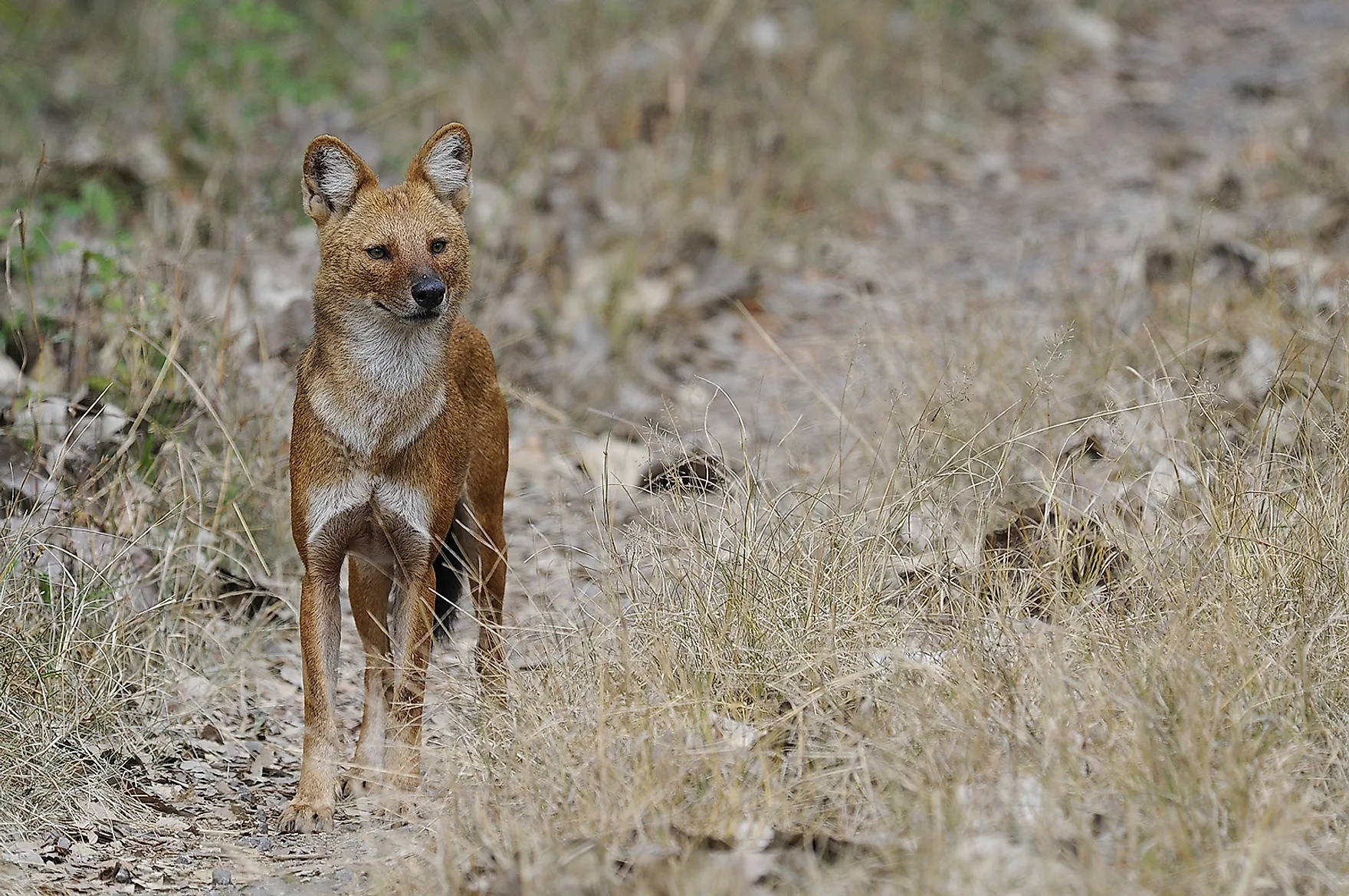
Asia's Dhole Populations At Risk Of Extinction
The elusive dhole (Cuon alpinus) is perhaps one of the most misunderstood species of all time and currently among the most threatened carnivores on the planet. The global wild population of this endangered canid is estimated to be <2500 mature adults. Almost forgotten by the world of conservation for decades, unknown to the public at large, and often mistreated by the humans with whom they share their habitat, the dholes of the world have had it rough.

Luckily, however, there is now a small but growing group of scientists and conservationists who are determined to put up a fight for the dholes. The species currently survives in fragments of the Indian subcontinent, Central, and Southeast Asia. This article explores the current conservation status of dholes across their range, the reasons behind the dhole's threatened status, and the ways to bring the species back from the brink with the help of inputs from experts.
Experts Interviewed
- Dr. Anish Andheria : President, Wildlife Conservation Trust (India); one of India's leading conservationists; recipient of the Carl Zeiss Conservation Award (2015); large-carnivore specialist
- Dr. Arjun Srivathsa : Research Associate, Dhole Project, Wildlife Conservation Society-India; IUCN SSC Canid Specialist Group, and IUCN Dhole Working Group
- Dr. Jan F. Kamler: Researcher at Wildlife Conservation Research Unit (WildCRU), University of Oxford, UK
- Dr. Martin Gilbert: Senior Research Associate at the Department of Population Medicine and Diagnostic Sciences at Cornell University College of Veterinary Medicine, USA
- Ambika Pd. Khatiwada: Conservation Officer at National Trust for Nature Conservation, Nepal.
- Priya Singh: Independent wildlife researcher; a member of the Wild Canids–India Project
Dholes: Status And Threats Across Their Range
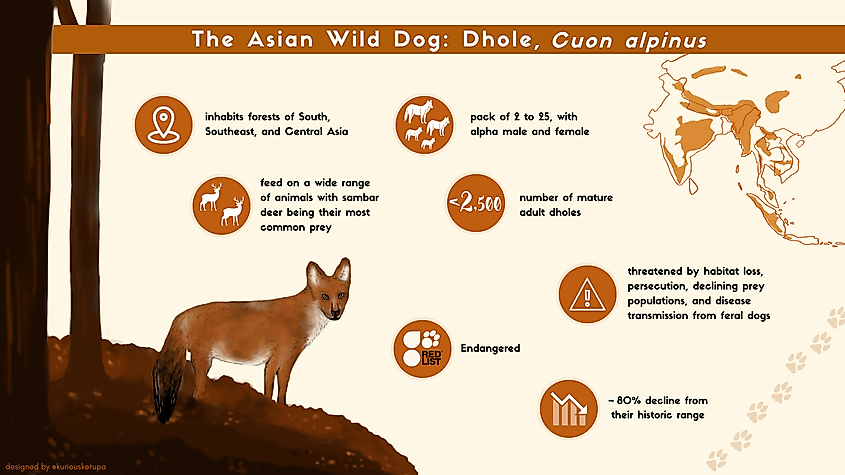
Dholes In The Indian Subcontinent
India, the country with the world's largest population of wild tigers, is perhaps the dhole's safest bet. India purportedly hosts the largest number of dholes in the world. Yet, the species has disappeared from ~60% of its historic range in the country in the past 100 years. And research work on the species is sparse.
"When we look at the conversion rate of hunting attempts to kills, the dhole is by far the most successful hunter in the Indian jungle. It has a much higher conversion rate compared to a tiger. However, its highly evolved hunting abilities are not enough to save its populations from a steady decline. Anthropogenic reasons leading to forest degradation, fragmentation and persecution have decimated dhole populations in several historical dhole habitats of India. Transfer of disease from feral and domestic dogs is also a huge threat" said Dr. Anish Andheria, one of India's leading wildlife conservationists. He is also the President of Wildlife Conservation Trust (WCT), India, an NGO that works across several states to help preserve and protect India's wildlife.
Being highly social, dholes show high levels of intraspecific interactions, and hence there is never a dull moment while observing a dhole pack, whether it constitutes three or 20 animals. Yet, they have been relatively less studied than tigers and leopards. The familiarity of humans with dogs and hence them taking dholes for granted could be one reason. Also, they are small-sized animals - an adult male dhole is just under 20 kg and an adult female under 15 kg. In general, small-sized mammals have not been studied enough, the same is true about small cats, jackals, badgers, and civets - not much research on these species," he continued.
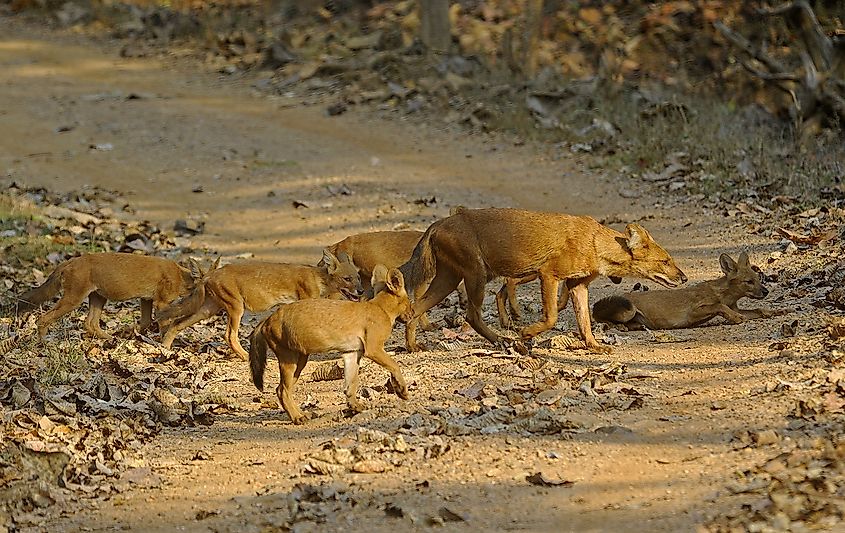
Realizing the urgent need to protect dholes and other wild canids in the country, and given the fact that they are grossly understudied, the Wild Canids–India Project was launched in 2018 by researchers affiliated with various organizations/universities. The project aimed to conduct research work to better understand wild canids and formulate science-based strategies including citizen science projects to conserve them. Some breakthroughs were soon made.
"We recently mapped dhole distribution across India as part of our Wild Canids–India Project," said Dr. Arjun Srivathsa, Research Associate, Dhole Project, Wildlife Conservation Society-India. He is also a member of the Wild Canids-India Project, IUCN SSC Canid Specialist Group, and IUCN Dhole Working Group.
"Dholes currently occur across 249,606 sq. km area in the country, which is ~49% of their potential habitat. Most populations are found in the Western Ghats, Central India, and Northeast Indian landscapes. We do not have a countrywide estimate of their population size. But our research from Kerala in 2019 showed that Wayanad Wildlife Sanctuary has a population of around 50 dholes (a density of ~14 dholes per 100 sq. km)," he mentioned.
Dr. Srivathsa’s research also found that people's perception of dholes (a major factor influencing the survival of dholes outside protected areas) varies by region.
" In south and central India, and in southeast Asia, people are rather indifferent to dholes. There's not much conflict as there are only occasional events of dholes attacking and killing domestic animals. The situation is starkly different in Nepal, Bhutan, and Northeast India, where people view dholes with a lot more animosity and negative interactions are commonplace," informed Dr. Srivathsa.
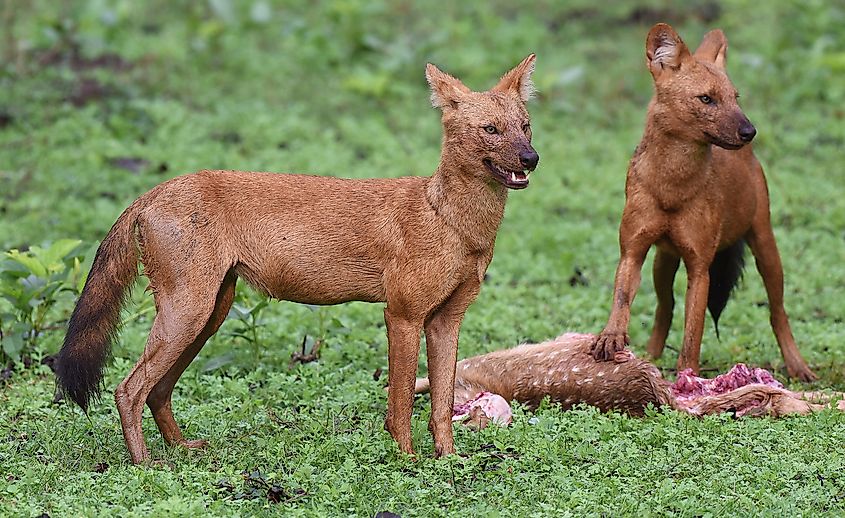
Priya Singh, an independent wildlife researcher, and a member of the Wild Canids–India Project, threw some light on the human-dhole interactions in Northeast India.
"Mithun (a form of cattle) and pigs are commonly reared by local people in the hill states of northeast India such as Arunachal Pradesh, Nagaland, and Mizoram. While pigs may be kept in captivity, mithun are free-ranging. And with low natural prey availability in the region due to a cultural prevalence of hunting, livestock becomes easy prey for carnivores such as the dhole who are known to frequently hunt mithun, and sometimes domesticated pigs. Hence, retributive killing of dhole is commonly reported from northeast India," she said.
Such killings are also common in neighboring Bhutan. Mass poisoning campaigns led to the near extinction of dholes in the country in the 1970s and 80s as they were held responsible for persistent livestock depredation. However, their elimination was followed by an increase in the number of wild pigs (Sus scrofa) that intensified crop damage caused by the pigs. It was believed that as wild pig populations were kept in check by dholes, the latter's near absence increased wild pig numbers in the country. Fortunately, since the late 1990s, the dhole population in Bhutan started recovering and re-establishing itself. Today, dholes are found in most protected areas in the country. Yet, their numbers are reportedly low, and the species is not even listed as a protected species in Schedule I of Bhutan's Forests and Nature Conservation Act.
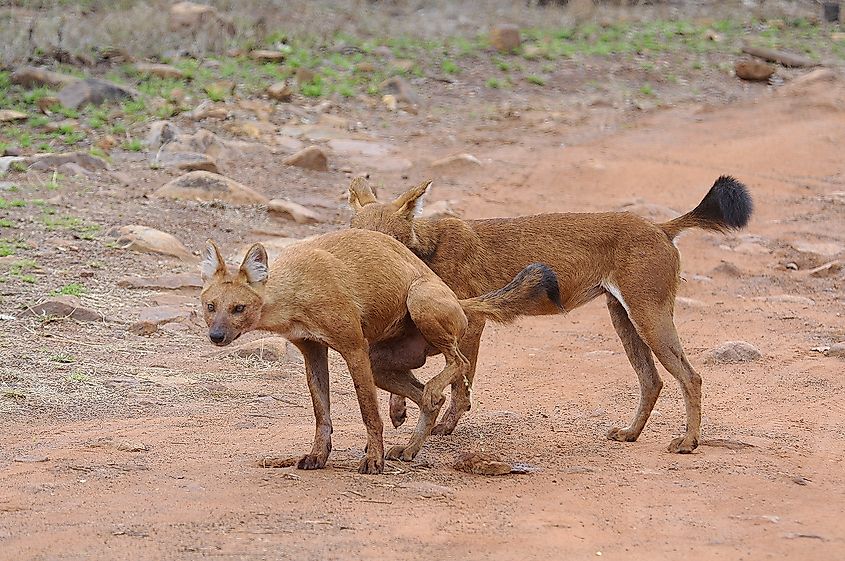
In Bangladesh, dholes are known to occur in parts of Chittagong Hill Tracts in the southeast and a recent study noted their occurrence in mixed evergreen mid-hill forests in the northeast.
In Nepal, dhole populations have been recorded in several protected areas as well as outside them. The Department of National Parks and Wildlife Conservation Act, 1973, ensures the species' protection in Nepal. But their numbers remain low and their populations highly threatened.
"Dholes are distributed from lowland protected areas to high altitude protected areas in Nepal. In high altitudes, communities practice rotational herding as a means of livelihood. Being a pack hunter, dholes kill livestock (yak, sheep, cow) in the pastureland of these communities. In retaliation, herders poison the carcasses of dhole's prey to eliminate dholes from their area. Few cases of poisoning were also observed in buffer zone areas of lowland protected areas," informed Ambika Pd. Khatiwada, Conservation Officer at National Trust for Nature Conservation, Nepal.
"Other threats to the species in Nepal include loss of prey due to illegal hunting, habitat loss, fragmentation, and competition with large predators like leopards and wolves in high altitude protected areas, and tigers in low altitude protected areas. A low level of awareness among local communities about the ecological significance of dholes also contributes to their demise. There is also the possibility of disease transmission by domestic dogs," he added.
Dholes Outside The Subcontinent
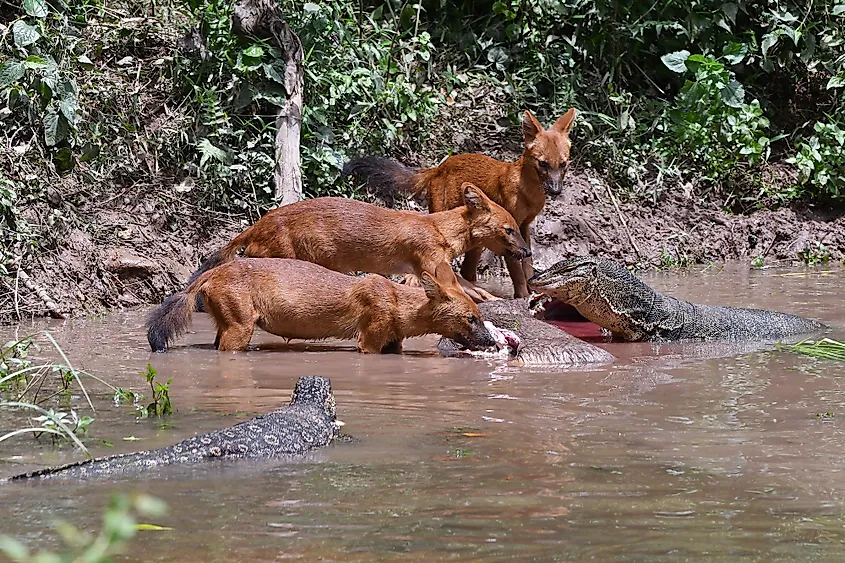
Like the tiger, the dholes have also suffered a worse fate outside the Indian subcontinent. In Southeast Asia, some populations of the species are known to exist in Malaysia, Laos, Cambodia, Thailand, and Myanmar. The species is possibly extinct in Vietnam.
"In Southeast Asia, dholes are restricted to small isolated populations, mostly concentrated in and around protected areas that are scattered throughout the region. The major threats to the species are depletion of their prey due to poaching, habitat loss, and disease transmission from free-ranging dogs," said Dr. Jan F. Kamler, researcher at Wildlife Conservation Research Unit (WildCRU), University of Oxford, UK.
"Local people in Southeast Asia tend to not think very highly of dholes. In general, dholes are just considered to be a type of forest dog, so not much thought is given to them. In places where dholes might attack livestock, they can be persecuted and poisoned by the local people," he said.
In China, dholes are on the verge of extinction. However, on February 5, 2021, the Chinese government upgraded the status of dholes from Class II to Class I on the National Key Protected Species List making the species eligible to receive the highest level of protection.
Little is known about dhole distribution in Central Asian countries. As per a 2015 report by the IUCN, the species is regionally extinct in most countries of the region.
Dholes And Infectious Disease
Among the many threats to the endangered dhole is the threat of disease transmitted to the species from domestic animals. With forest cover reducing and natural prey getting depleted, these wild dogs are forced to feed on livestock and enter human-dominated landscapes. Such circumstances make dholes susceptible to a number of infectious diseases carried by domestic animals, particularly domestic dogs, but there is little information about how these pathogens affect dholes in the wild. Dr. Martin Gilbert, Senior Research Associate at the Department of Population Medicine and Diagnostic Sciences at Cornell University College of Veterinary Medicine, USA, provided some expert insights into the issue.
"Considering the threats faced by other endangered social canid species, particularly African wild dogs and Ethiopian wolves, it is likely that infectious disease does represent an important threat for dhole populations. Such diseases could even be capable of causing local extinctions," said Dr. Gilbert.
"Anecdotally, there have been reports of sick dholes in the wild, but these are rarely investigated. Based on outbreaks in zoos, we know that dholes are highly susceptible to canine distemper virus, with outbreaks causing high levels of mortality. They are also vulnerable to the rabies virus, which is also common in many countries where dholes live. As in other species, the death of dholes infected with the rabies virus is likely to be inevitable. The skin mite that causes sarcoptic mange has also been devastating to some wild canid populations. Reports of hair loss in some wild dhole populations could relate to this infection and deserves further study. Most of the pathogens of greatest concern to dholes require close contact with an infected host, which pass on the infection either through a bite (as in the case of rabies) or via respiratory droplets (as in the case of distemper). It is believed that some of these infections (particularly distemper) may be passed on when carnivores feed on infected prey, but the evidence for this is mostly circumstantial," he further stated.
Dr. Gilbert also voiced his concern over how such infections can lead to the local extinction of the species given that dholes are social animals.
"Once an individual dhole is infected it is likely to pass on the pathogen to other members of its pack during normal social interactions. In this way, pathogens like rabies could be responsible for the loss of whole packs. Distemper outbreaks have also been responsible for local extinctions of other threatened carnivores, but more usually we’d expect a few infected animals to survive and could potentially repopulate an area. Of course for a pack-living species that work as a group to bring down prey and defend a territory life becomes much more difficult when numbers are depleted by disease. In these cases packs might disband and become incorporated into neighboring dhole packs, bringing with it the chance of further disease transmission if these interlopers are still infectious," he commented.
Saving Dholes While There Is Still Time: Mitigation Measures
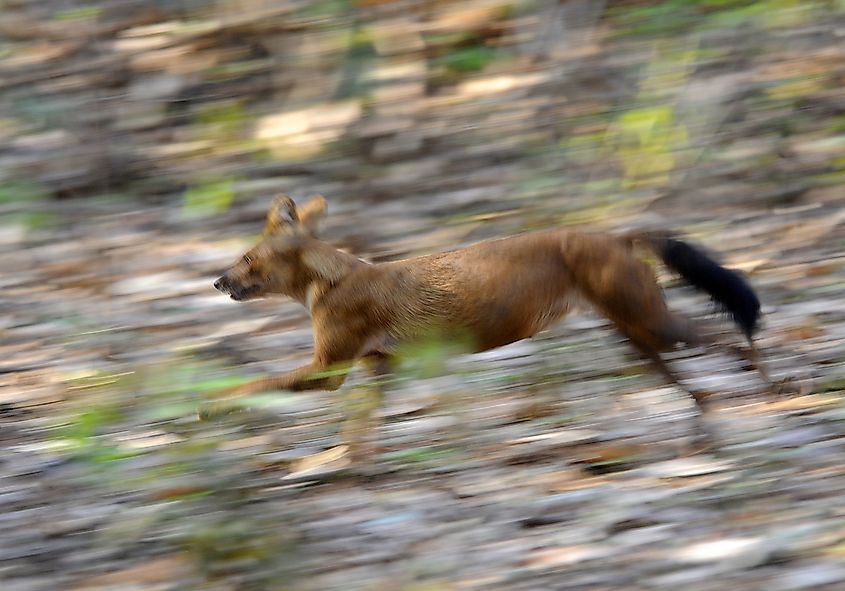
From the above discussion, it becomes clear that dholes are racing towards extinction across their range. And with the species being restricted to small populations, catastrophic events like the spread of an infectious disease could eliminate entire populations in the blink of an eye.
So, what could be the possible strategies to save the species before it is too late? Could India's Project Tiger implemented to protect the country's national animal, the Bengal Tiger, be beneficial to dholes as well since protected tiger habitats often overlap with that of dholes?
Dr. Andheria answered the question: "Tiger conservation, depending on the context, has both helped and depleted dhole populations. The protection awarded in the name of the tiger by the declaration of tiger reserves is definitely beneficial to dholes, especially in woodland habitats. But the urge to increase tiger densities in all kinds of habitats by adding more waterholes and modifying habitat has increased tiger numbers but affected dhole numbers negatively because of interspecific competition between tigers and dholes. A large dhole pack of over 10 individuals can hold its ground against an adult tiger that can be between 7 to 12 times heavier than an adult dhole. However, smaller packs can easily be decimated by tigers through predation of adults and more so of pups. More studies on interspecific interactions of dhole and other predators inside Protected Areas and the interaction of dhole with people and their livestock outside PAs will definitely shed more light on how important dhole-specific conservation strategies will be. My guess is that such dhole-specific strategies may be required in several locations," he said.
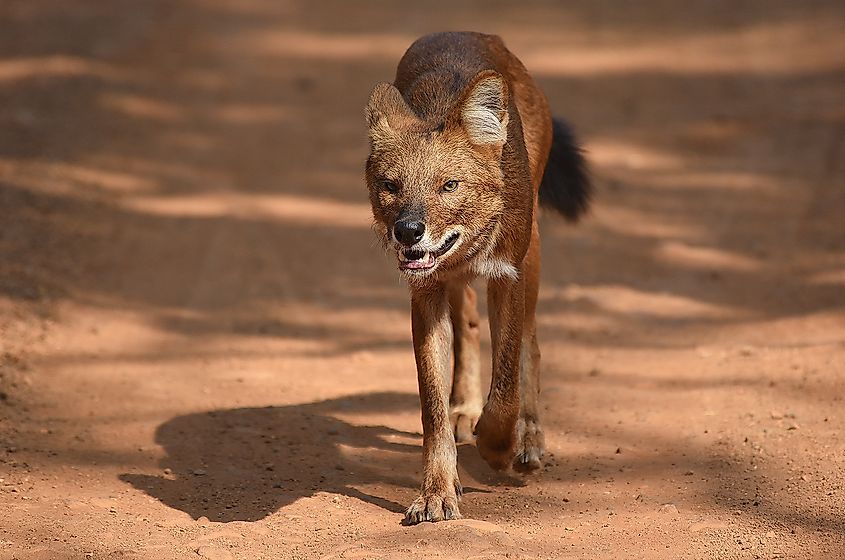
According to Dr. Srivathsa, more research on dholes is the need of the hour but procuring funds for the same is the difficult part.
"Although the dhole is in the same threat level category ("Endangered") as the tiger as per the IUCN, there's very little we know about dholes from large parts of their distribution range. There has been some increase in scientific focus on the species in the past 5-8 years or so but we are just scratching the surface at this point. India has still produced the highest number of peer-reviewed papers on dholes compared to other dhole-range countries. Across most parts of their range, dholes are not prone to conflict with people, nor are they poached for meat or fur. Since there is nothing seemingly "sensational" about them, we have found it very hard to raise funds to study and conserve the species," he commented.
"Recently we have been trying our best to synthesize conservation research work on dholes at different levels across India in our attempts at creating a countrywide conservation plan. The purpose of the plan should not just be to direct conservation action, but also to highlight research and knowledge gaps and appeal for explicating these gaps," he continued.
Khatiwada suggested the implementation of community awareness programs and a community-based livestock insurance scheme for dholes in parts of their range where persecution by humans is a persistent threat. The introduction of such an insurance scheme in the Kangchenjunga Conservation Area of eastern Nepal has been beneficial to the region's herders and dholes.
"There are very few dhole conservation projects on the ground in Nepal. We need to understand more about their specific habitat requirements, population, food, and diseases. Research on these topics may help for better management interventions in the future. As dholes are wide-ranging species, corridors and bottlenecks should be maintained and conserved. Community engagement outside the protected area network is also necessary for their conservation. There is no dhole conservation action plan for Nepal. This plan should be prepared and government authorities, conservation organizations should also invest in dhole conservation. Up to now, conservation is focused more on charismatic and large-bodied species which is important but also should consider dhole-like species to address the pressing issues of their conservation," stated Khatiwada.
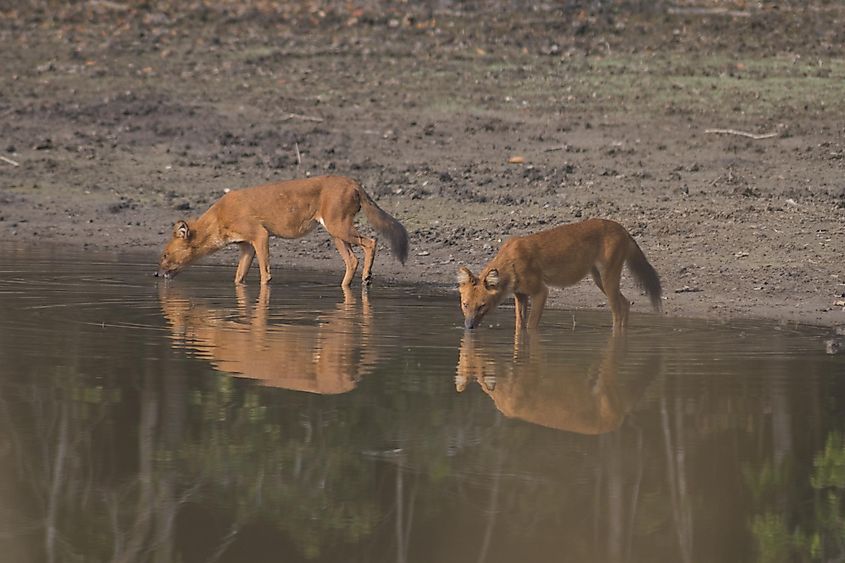
According to Dr. Kamler, the threat of poaching needs to be urgently addressed to save dholes in Southeast Asia.
"Dholes definitely need some better publicity, especially given their endangered status and their importance in Asian ecosystems as one of the few apex carnivores. So I think education campaigns are needed to educate people in the region about dholes and raise their profile. Southeast Asia is in the midst of a poaching epidemic, which is devastating not only dholes but also the prey on which they depend. Most of the poaching is the result of increased demand for wild meat and other animal products by people at all levels of society. So if dholes are to have any future in Southeast Asia, then poaching levels need to be reduced, however, this won’t be easy and there is no single solution. I think a three-pronged strategy is needed to address the poaching problem. It should involve increased law enforcement in protected areas, engagement with local people to stop snaring and other forms of poaching, and education campaigns to reduce demand for wild meat and other animal products by the public," he suggested.
With infectious diseases being a major potential threat to dhole populations across their range, Dr. Gilbert mentioned several measures that can be adopted to keep such infections in check.
"It is important to realize that domestic animals are only one potential source of infection for dholes, as all of these pathogens can also be found in other wildlife species (particularly other carnivores). Therefore it is important to understand how these pathogens are being maintained locally, identifying which species (or group of species - domestic or wild) are acting as reservoirs and sources of infection for dholes. In situations where domestic dogs are the most important source of infection, it is possible to reduce the risk through vaccination programs. Good vaccines exist for both distemper and rabies, with the added benefit that this helps protect local people from infections of the latter. In areas where wildlife plays a role as a disease reservoir, the options are more limited. The most effective approach would be to vaccinate the dholes themselves, but captive trials would be required to be sure that this is a safe and effective method of protecting them. Oral vaccines for rabies are widely used in other wildlife species and so could potentially be used to protect dholes, but at least at present we don’t have an equivalent oral vaccine for distemper and so developing such a vaccine could be a game-changer for protecting dholes or other threatened carnivores from this serious disease," he said.
The expert opinions above make it evident that region-specific strategies are needed to protect dholes across their range. Also, more in-depth research on the species is necessary to design such conservation strategies. But time is running out for these endangered wild dogs and they are yet to grab the much-needed spotlight in the world of conservation.
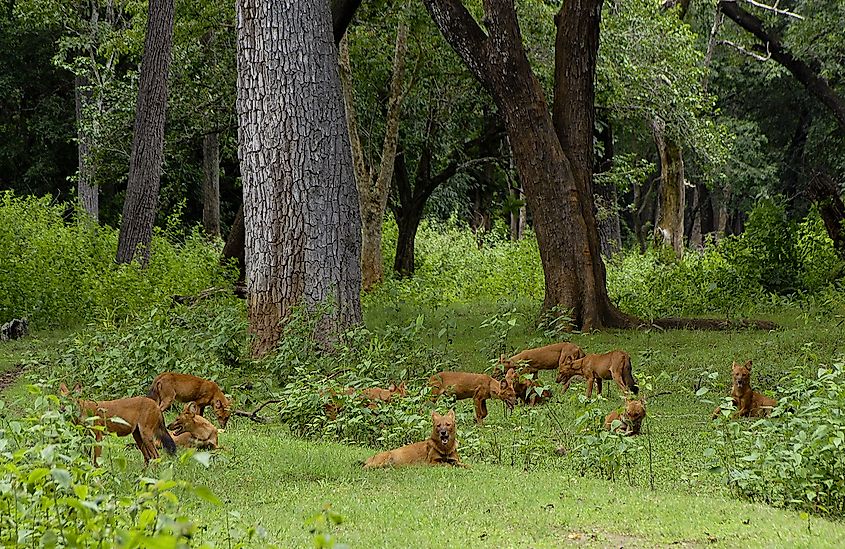
“The dog is considered as our best friend since eons. While this camaraderie between dogs and us has resulted in them being our most favored pets, the same affection is seldom extended to wild canids. Wolves, jackals, coyotes, and dholes have all suffered at the hands of rapid urbanization and persecution. Being an efficient predator, the dhole occupies an important niche in tropical forests. Intuitively speaking, the gradual disappearance of dhole from their historic range would have definitely impacted the composition of wild herbivores, and thus the way these herbivores interact with plants. Unfortunately, in the absence of any long-term study, we are unlikely to realize the true value of these master hunters in stabilizing hundreds of thousands of square kilometers of tropical ecosystems. While I have spent decades studying tigers and leopards, my respect for these whistling hunters has grown with every observation. I only hope that in the coming times, these indefatigable red dogs will fill the hearts of countless global citizens with the perkiness that they so beautifully epitomize,” said Dr. Andheria.











